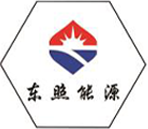
Dec . 07, 2024 15:29
Back to list
gas filter separator
Understanding Gas Filter Separators Essential Components for Efficient Gas Processing
Gas filter separators are integral pieces of equipment used in various industries, particularly in oil and gas extraction and processing. Their primary function is to separate gas from liquid and solid contaminants, ensuring that the processed gas meets quality specifications and is fit for transportation or further processing.
The Need for Gas Filter Separators
In the extraction process, natural gas often comes mixed with water, oil, and various solids, which can originate from the geological formations. These contaminants not only affect the purity of the gas but can also damage pipelines and downstream equipment. To mitigate these issues, gas filter separators are employed.
They enhance efficiency by maintaining the integrity of the gas supply, which is crucial for operational longevity and effectiveness. By removing unwanted substances, gas filter separators contribute to the overall quality of the gas, ensuring that it meets regulatory standards for transportation and sale.
Design and Operation
Gas filter separators can vary in design, but they typically consist of a pressure vessel that uses gravity and centrifugal force to facilitate the separation of different phases. The main components include a separation chamber, filtration system, and an outlet for the separated gas.
1. Separation Chamber The gas enters the separation chamber where the gravitational forces cause heavier liquids and solids to fall to the bottom. The designed angle and size of the chamber play vital roles in optimizing the separation process.
2. Filtration System The upstream flow usually passes through a filtering medium, which helps in catching any residual solids and liquids that may still be present. This filtration can be either a simple mesh screen or more complex filtering options depending on the application’s requirements.
3. Gas Outlet Once the separation is complete, the clean gas is expelled through an outlet. This gas can then either be sent to the compressor for further processing or directly to the end-user, depending on the application.
gas filter separator

Types of Gas Filter Separators
There are various types and configurations of gas filter separators, each designed to cater to specific needs
- Vertical and Horizontal Separators The choice between vertical and horizontal designs often depends on space limitations and the volume of gas being processed. Vertical separators are generally more compact, while horizontal separators are often easier to maintain.
- Coalescing Separators These are designed specifically to remove water from gas streams. They utilize coalescing filters to unite small water droplets into larger ones, which are then easily separated.
- High-Temperature and High-Pressure Separators For applications in extreme environments, specially designed separators are necessary to handle high temperatures and pressures without compromising performance.
Maintenance and Operational Considerations
Proper maintenance of gas filter separators is crucial to ensure their longevity and effectiveness. Regular inspections are necessary to check for blockages, leaks, and the condition of filtering media. Over time, filters may become saturated with contaminants, leading to increased pressure drops and reduced efficiency. Therefore, timely maintenance not only preserves the equipment but also enhances overall productivity.
Conclusion
Gas filter separators are vital in the oil and gas industry, delivering clean gas for transportation and processing. They play a crucial role in separating contaminants to protect infrastructure and ensure compliance with quality standards. As technology advances, further improvements in their design and efficiency are likely, ensuring these separators continue to meet the demanding needs of the industry. Understanding their function and maintenance contributes significantly to operational success, making gas filter separators indispensable in modern energy production.
Latest news
-
Safety Valve Spring-Loaded Design Overpressure ProtectionNewsJul.25,2025
-
Precision Voltage Regulator AC5 Accuracy Grade PerformanceNewsJul.25,2025
-
Natural Gas Pressure Regulating Skid Industrial Pipeline ApplicationsNewsJul.25,2025
-
Natural Gas Filter Stainless Steel Mesh Element DesignNewsJul.25,2025
-
Gas Pressure Regulator Valve Direct-Acting Spring-Loaded DesignNewsJul.25,2025
-
Decompression Equipment Multi-Stage Heat Exchange System DesignNewsJul.25,2025

